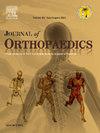肩关节置换术中患者特异性内固定(PSI)与常规内固定(CI)的比较:荟萃分析和系统回顾
IF 1.5
Q3 ORTHOPEDICS
引用次数: 0
摘要
本研究评估了肩关节置换术中患者特异性内固定(PSI)与常规内固定(CI)的有效性。准确的肩关节假体放置对成功的肩关节置换术至关重要,PSI提供了提高这种准确性的潜力。方法于2024年4月10日按照《系统评价首选报告项目》和《Meta-Analysis范围评价指南》对PubMed、Embase、Scopus、Web of Science和Cochrane进行电子检索。搜索的关键词是“肩关节成形术”和“三维打印”。对出版日期没有任何限制。结果纳入10项临床研究,4092例患者,比较PSI和CI。结果显示,PSI总体上改善了放射学结果,前后偏移误差更小,螺钉长度更长,并且在版本、倾角和上下级偏移误差方面具有统计学上显著的降低。然而,在手术时间、并发症发生率或患者报告的短期结果(如Constant Murley评分)方面,PSI和CI之间没有显著差异。结论:虽然PSI不能显著减少短期并发症或改变患者报告的结果,但它显示了增强肩关节假体定位的潜力。准确放置关节盂假体对于长期成功是至关重要的,PSI可以减少术后并发症,如关节盂松动。然而,大多数研究缺乏长期随访,限制了充分评估这些益处的能力。该研究还强调了PSI设计的可变性,并呼吁采用标准化协议来提高数据的一致性和准确性。建议进行更长时间的随访研究,以更好地评估PSI对长期结果的影响。总之,PSI可以在不增加手术复杂性的情况下改善放射学结果,是肩关节置换术中替代CI的一个有希望的选择。证据水平ii。本文章由计算机程序翻译,如有差异,请以英文原文为准。
Comparison of patient-specific instrumentation (PSI) versus conventional instrumentation (CI) in shoulder arthroplasties: A Meta-Analysis and Systematic Review
Background
This study evaluates the effectiveness of patient-specific instrumentation (PSI) versus conventional instrumentation (CI) in shoulder arthroplasties. Accurate glenoid component placement is crucial for successful shoulder replacements, and PSI offers the potential to improve this accuracy.
Methods
Electronic database search of PubMed, Embase, Scopus, Web of Science and Cochrane was performed on April 10, 2024, in accordance with the Preferred Reporting Items for Systematic Reviews and Meta-Analysis guidelines for scoping reviews. The searches were conducted using the keywords relating to “shoulder arthroplasty” and “three-dimensional printing”. No restrictions were placed on the date of publication.
Results
10 clinical studies involving 4092 patients, comparing PSI and CI were included. The results show that PSI generally improves radiological outcomes, with lower anterior-posterior offset errors, longer screw lengths, and near statistically significant reductions in version, inclination, and superior-inferior offset errors. However, there was no significant difference between PSI and CI in terms of operative duration, complication rates, or short-term patient-reported outcomes such as the Constant Murley Score.
Conclusion
While PSI did not significantly reduce short-term complications or alter patient-reported outcomes, it demonstrated a promising potential to enhance glenoid component positioning. Accurate placement of the glenoid component is crucial for long-term success, and PSI may reduce postoperative complications such as glenoid loosening. However, the lack of long-term follow-up in most studies limits the ability to fully assess these benefits.
The study also highlights the variability in PSI design and calls for standardized protocols to improve data consistency and accuracy.Longer follow-up studies are recommended to better assess the impact of PSI on long-term outcomes. In conclusion, PSI may improve radiological outcomes without increasing surgical complexity, representing a promising alternative to CI in shoulder arthroplasty.
Level of evidence
II.
求助全文
通过发布文献求助,成功后即可免费获取论文全文。
去求助
来源期刊

Journal of orthopaedics
ORTHOPEDICS-
CiteScore
3.50
自引率
6.70%
发文量
202
审稿时长
56 days
期刊介绍:
Journal of Orthopaedics aims to be a leading journal in orthopaedics and contribute towards the improvement of quality of orthopedic health care. The journal publishes original research work and review articles related to different aspects of orthopaedics including Arthroplasty, Arthroscopy, Sports Medicine, Trauma, Spine and Spinal deformities, Pediatric orthopaedics, limb reconstruction procedures, hand surgery, and orthopaedic oncology. It also publishes articles on continuing education, health-related information, case reports and letters to the editor. It is requested to note that the journal has an international readership and all submissions should be aimed at specifying something about the setting in which the work was conducted. Authors must also provide any specific reasons for the research and also provide an elaborate description of the results.
 求助内容:
求助内容: 应助结果提醒方式:
应助结果提醒方式:


